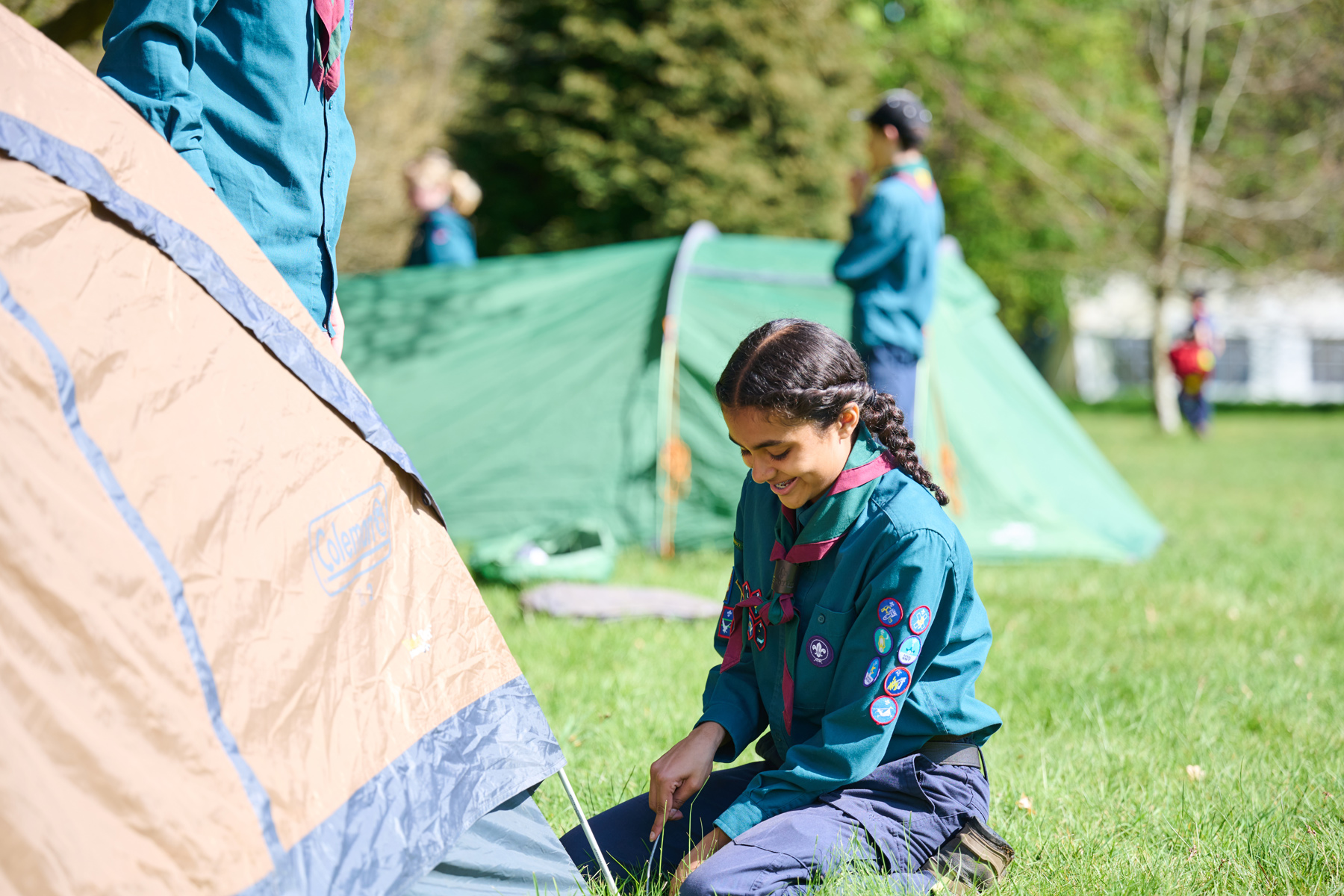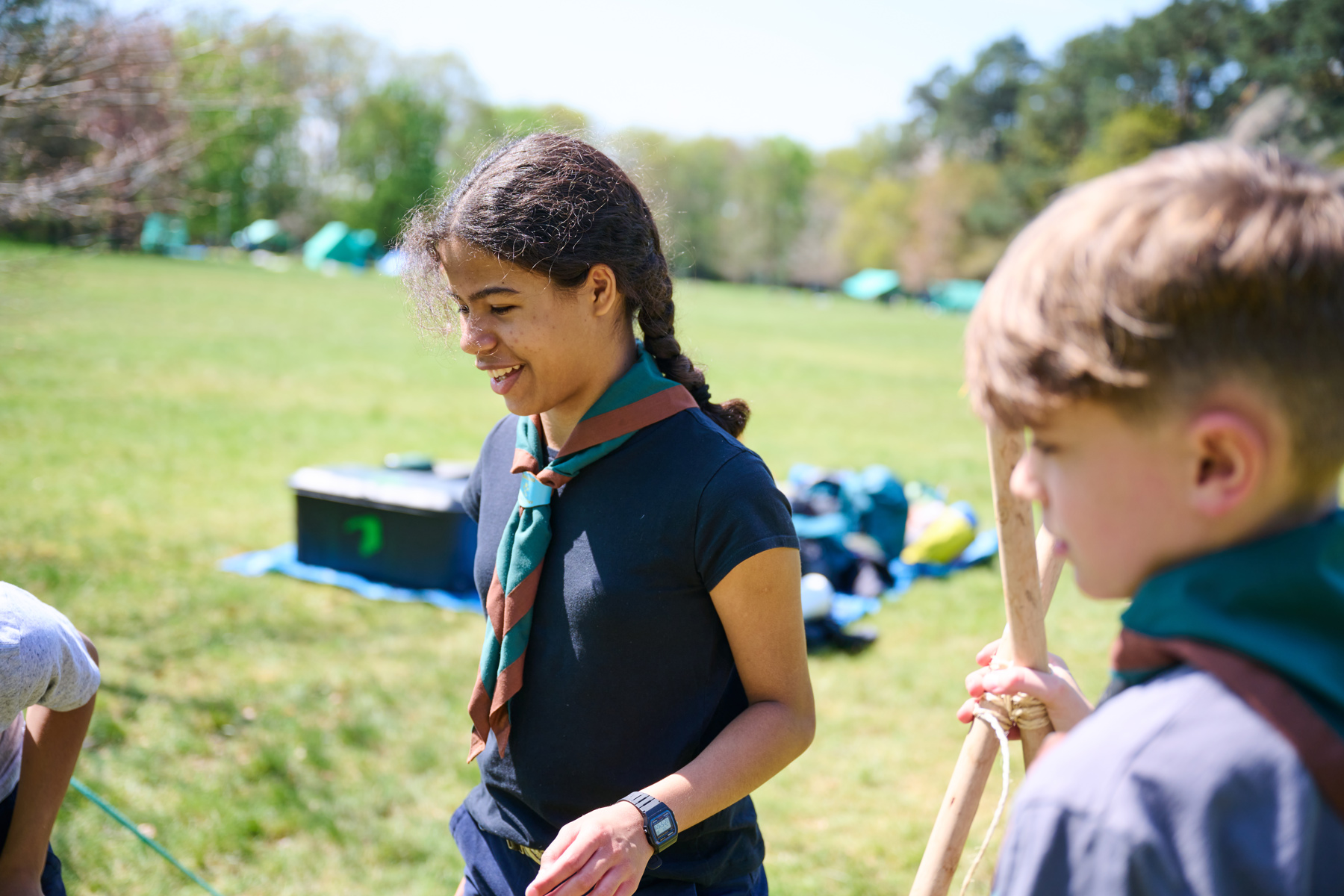Writing a kit list
Advice for writing a kit list
When it comes to preparing for a Night Away event, sleepover, expedition or residential, a thorough kit list is key. It’s important guide that should be followed by all attendees.
A well-thought-out kit list not only makes sure you're ready for any unpredictable weather, but also equips you with the essentials for a seamless outdoor experience. From durable waterproofs to a warm sleeping bag, each item on your list has a crucial role in making sure everyone is safe and comfortable, no matter the activity on offer.
Think about the activities you’ll be doing and if people will need specific equipment or items of clothing. For example, your arms or ankles may need to be covered to do some activities.
You might need swimming equipment, cycling helmets or a wetsuit.
You’ll need to remind people to bring hair ties for long hair, so they can tie it back for activities. It’s best to avoid jeans for activities, as they get heavy and cold when wet.
It’s important to make it clear what people shouldn’t bring and this is based on each individual trip and group.
Items may not be allowed for lots of reasons, such as due to cost, allergies, risk of loss or damage, insurance coverage, distraction or sentimental value.
However, remember that some people may need items, such as mobile phones, for medical reasons, being a young carer, international trips or other reasons. Older age groups may also want to bring phones, too.
Some items you may not want to bring are:
- Electrical devices, such as tablets, cameras, mobile phones, hairdryers or tongs
- Games consoles, such as Nintendo Switch
- Foods that contain common allergens, such as nuts, depending on your Group
- Jewellery
- Any valuables items
- Any precious or sentimental items
- Aerosols, such as spray deodorant, as it can trigger asthma or smoke alarms
- Medications, such as ibuprofen and paracetamol. Always remind them that these will be available centrally via the leadership team.
Personal kit may need to be carried some distance and carried by the young people themselves. Make sure to note anything that is optional to help reduce weight. Remember to consider the terrain and suggest appropriate bags. For example, rucksacks and holdalls, rather than suitcases, for camping.
It’s always good to advise to bring a teddy, some books or a pack of cards. These items can really help in down-time, but remember to follow the venues rules on what’s allowed, such as ball games.
Depending on where you’re staying, either indoors and outdoors, and the time of year, you may need to bring different items.
For hot weather, think about suncream, sunglasses and sun hats.
For cold weather, think about extra blankets, gloves, thicker sleeping bags and hats.
Take a look at our advice on hot weather and cold weather.
If you’re short on space using collapsible camping gear can be a real help.
If you’ve any free-time or night-time events, such as a disco, remember to ask people to bring casual or party clothing. People may want to bring a separate one or two sets of comfortable clothing for evening or down-time. This could include jeans.
It’s best to bring a laundry bag for dirty dry clothes and a labelled bin bag for wet or muddy clothing. The people leading the trip may want to take some spare bin bags, too.
Ask everyone to bring a small rucksack or day bag, so they can carry a spare jumper and water bottle around. They may want to put in some extra socks to keep their feet warm and dry. A bag keeps everything together, so nothing hopefully gets lost.
You may want to suggest that people bring indoor shoes, so they can take muddy shoes off at the door.
The indoor shoes could be slippers or something that’s easy to put on and change into.
Remember, jelly shoes, crocs, wellies, wetsuit boots or anything with open toes (such as flip flops and sandals) are not usually suitable for water sports or activities.
Clothes are likely to suffer wear and tear and also get dirty and/or wet, so you should advise bring several changes of old clothes for doing activities.
If you’re doing activities, especially water-based or muddy activities, advise people to bring two items, so one can get wet and dirty. The other one can be used for personal use.
For example, two towels great, so one can be used for activities and one can be used for showering.
Some people may not have specific or expensive equipment.
Make sure it’s clear what’s optional on your kit list. You should look into what equipment is needed, what can be hired or borrowed, and how else you could source the items.
Could some people share the item? Could you fundraise or get a grant to buy the items for the group as a whole, or are they available second hand?
Not everyone will have camping or overnight equipment and that’s OK. The item will be on the kit list for a reason, so the person will very likely need it. Therefore, it’s important to make sure to flag the missing items to the volunteers leading the trip, so they can help you.
Some Scout groups have a selection of kit available for their Group or Section to borrow and use.
Remember, if you don’t have some items, talk to your group before buying anything. They may be able to provide it, offer grant funding or have good advice on where to buy it second-hand.
The person leading the trip could also ask if other parents and carers or Scout Groups can lend or donate spare kit, such as sleeping bags. Depending on what the item is, it might be able to be shared between young people.
Remember, any equipment that is hired or borrowed should be inspected before it is taken. Any defects or faults should be noted and agreements made as to who will rectify it. This is especially important when hiring equipment, as it may affect a deposit being refunded.
You should make sure there’s adequate insurance in place for property and equipment you own, store, hire or loan out to others. Find out more about Insurance in Scouts.

An example kit list for young people and volunteers
For a camp, here are some ideas of things you may want or need on your kit list for each individual to bring on a night away event.
- Sleeping bag or duvet
- Pillow and pillow case
- Spare blanket
- Roll mat or sleeping mat
- Eating kit in a cloth bag - including an unbreakable plate, bowl and cup, cutlery (knife, fork, spoon) and tea towels
- Scout uniform
- T-shirts
- Long sleeved shirts or tops
- Warm coat
- Waterproof jacket
- Waterproof trousers
- Fleeces, sweatshirts or jumpers
- Trousers or leggings for activities - but not jeans as they get heavy and cold when wet
- Underwear
- Socks, including ones that cover the ankle
- Sleeping socks, such as fluffy socks
- Walking socks if taking walking boots
- Casual clothes for the evening
- Suitable nightwear
- Night socks
- Coat hangers
If you’re planning a barbecue or campfire, you may want to remind people to bring items that are okay to smell of smoke.
- 2 pairs of trainers - 1 for activities that can get muddy and 1 for casual wear or indoors
- Durable shoes, such as walking boots or wellington boots
- Swimming costume/swim shorts
- Rash vest
- Goggles
- 1 old pair of old trainers for water sports (if needed)
- You may want to pack specific sport equipment, such as football boots and shin pads or walking poles, depending on the activities you’ll be doing.
- 2 towels - 1 for showering and 1 old one for activities (a microfibre quick drying towel is great!)
- Labelled bin bag for wet and dirty clothing
- Wash bag that includes soap, shampoo, face cloth, conditioner, body wash, toothbrush and toothpaste
- Hair ties for long hair
- Insect repellent
- Period products
- Comb or hairbrush
- Tissues
- Food and drink items, such as snacks, depending on leader advice
- Watch or alarm clock
- Reusable drinks bottle
- A flask for hot drinks
- Small rucksack/bag
- A torch with spare batteries
- A headtorch
- A soft-back book
- Any small games, such as cards, for free time
- Teddy
- Pocket money in a labelled wallet or purse
- Any personal medication that’s labelled and must be given to adult volunteers
- Spare glasses and glasses case (if used)
- Camping chair (optional, depending on group’s kit list)
- Disposable camera
- Pen/pencil or notepad
- A dry bag
- Devices, chargers/power banks for any devices and travel adaptors (if applicable and allowed, depending on group’s kit list)
- In summer, you may want to take shorts, sunglasses, baseball cap, sun hat and sunscreen.
- In winter, you may want to take a warm coat, thermal base layers, hat and gloves.
- You may want to pack specific sport equipment, such as football boots and shin pads or walking poles, depending on the activities you’ll be doing.
- If you’re planning a barbecue or campfire, you may want to remind people to bring items that are okay to smell of smoke.
- Evening or party clothes and shoes for any planned events, such as a disco or restaurant visit.
